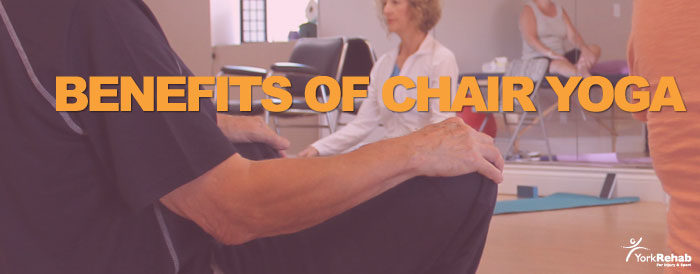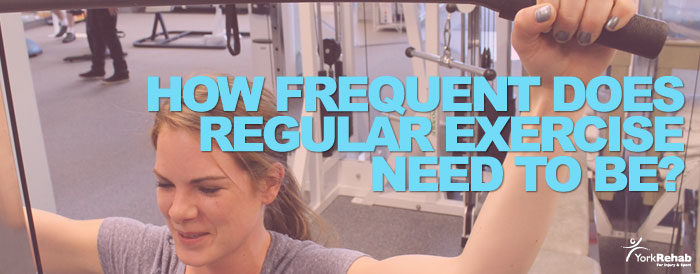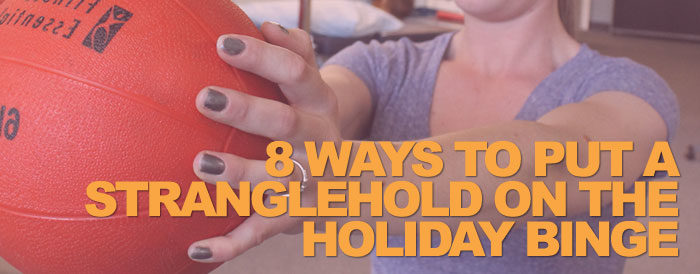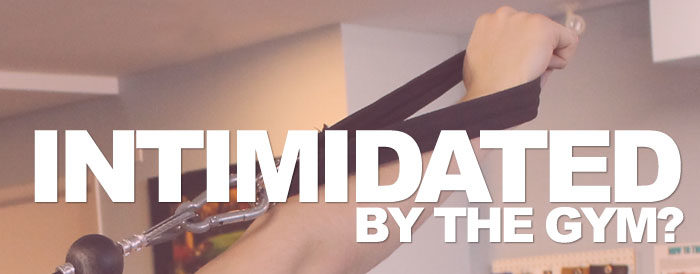The McKenzie Method – Mechanical Diagnosis & Therapy (MDT)
If you’ve ever had joint pain, this situation may be familiar to you: every family member, friend, and coworker has the time-honoured “magic solution” to get you better. Whether it’s heat, medication, meditation, or dousing yourself in honey, everyone has a suggestion. One you may have heard about is doing “McKenzie exercises” to recover. What are these exercises? Are they effective? How does it work?
“Mechanical Diagnosis & Therapy” or MDT
Also known as Mechanical Diagnosis & Therapy (MDT), the McKenzie Method is a comprehensive assessment system for orthopedic conditions such as back pain or shoulder pain, and is more than just a series of exercises. It allows the assessor to reliably classify you into different subgroups so that the right treatment can be applied. Practitioners need to understand you and your condition before they can hope to begin any treatment. It’s just like taking your car into the mechanic when something is malfunctioning – a good mechanic will take the time to ask you what the problem is (what are the symptoms?), and then will run tests to determine the source of the problem (does it hurt if you move that way?). You can’t expect the repairs to be made immediately – careful diagnosis is required first.
The McKenzie Method system was developed by New Zealand physiotherapist Robin McKenzie in the 1950s and 60s. One day he had a patient with back pain radiating down to his foot come in and he told him to go lie down on an unoccupied bed. Little did Robin know, the top half of the bed was at an angle, so the patient laid face-down on the bed with his back in maximum extension (like the cobra position in yoga). At the time the conventional wisdom was this was a terrible position for back pain. However, when Robin asked the patient how he was doing, he remarked that the leg pain had disappeared. This was so contrary to all his teachings that it inspired him to begin experimenting with different postures and movements and making careful observations with his patients. Patterns began to emerge, and he realized that these patterns could apply to all joints of the body.
McKenzie Method Today
Today the McKenzie Method is practiced globally by rehabilitation professionals of many backgrounds. Since its humble beginnings in New Zealand, it has been supported by numerous scientific publications around the world. Despite this, it is not a universally adopted system. Because the emphasis is first on understanding the problem at its root, which may take several sessions to achieve, it is at odds with the “treatment first” approach. Too often in rehabilitation the approach is to treat the symptoms with modalities such as heat or electrical stimulation, as opposed to getting an understanding of the cause. Fortunately, when the cause is identified using MDT, treatment can be very effective.
The majority of musculoskeletal problems are mechanical in nature – they are affected by movement. Mechanical problems require mechanical solutions, and often it is simply a matter of finding the right direction and force to move into. For example, a person with knee pain might respond to repeated knee straightening movements and have less pain and improved squatting mechanics as a result. If the right movement is applied regularly and aggravating factors are avoided, then rapid improvement is seen, often in a matter of days. Most people can treat themselves once they know what to do – patient independence is one of the central philosophies of MDT. This saves time and eliminates the need for long courses of treatment with many visits. Additionally, you will be shown how to prevent future episodes from occurring, and how to self-treat if the pain does happen to return.
So, the next time that shoulder starts to ache or your knee starts to lock up, instead of using the old family remedies, try looking up a certified McKenzie practitioner. The solution to your problem may be simpler than you think. York Rehab’s Newmarket Physiotherapy clinic has the most therapists certified in McKenzie treatment in Ontario.
Benefits of Chair Yoga
Yoga can be intimidating because there’s a misguided notion that you need an advanced level of strength and flexibility. And although possessing an advanced level of each will make a yoga session easier, a great workout is always achieved because yoga pushes your own limits no matter what your capability. Our Newmarket physiotherapy clinic has a Fitness Studio where we’ve been hosting yoga classes for several years. We think yoga is wonderful for your health, wellness, recovery and spirit. Yoga really is magical. From time to time we host a Chair Yoga session in order to encourage people to come out and experience Yoga – we feel if you try it once, you’ll be hooked.
So why the chair? Here are some benefits of Chair Yoga:
Balance & Support. We want to reduce the intimidation factor in order to get someone to come and experience yoga first hand. The chair adds an element to a person’s confidence knowing that it can be used as a prop to aid with balance and support. Poses that require a one-legged stance are much easier when you have something to hold on to and it allows you to develop competency in the particular position until you are comfortable enough to let go.
Building Strength & Stamina. Many are fooled into thinking that yoga is easy, it’s just a bunch of easy poses while you are sitting or lying down. And while sitting and lying are definitely part of the practice, the deliberate and controlled movement that is required from each pose will often engage muscles not normally used making yoga a great workout. This results in developing greater strength, stamina, flexibility, and balance. And this happens regardless of how good you are at yoga – as long as you challenge YOUR limits you will experience results.
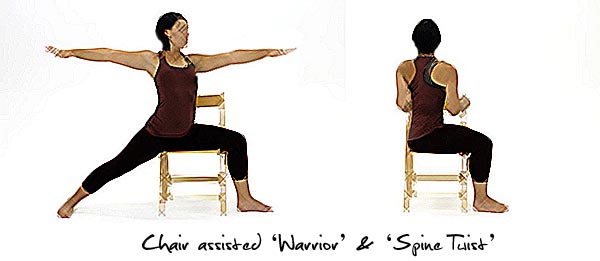
A chair to assist with something like a “spine twist” or a “warrior pose” can safely get you into slightly more challenging poses sooner allowing you to reap the rewards quicker.
Get into Activity Sooner. When recovering from an injury, especially if the injured area is in your lower body, mobility (and confidence) may be limited. A chair provides the support that allows you to begin introducing exercise/activity back into your life. The opportunity to sit while engaging in activity can reduce any discomfort you might feel while standing if you are recovering from an injury.
If you’d like to know when the Fitness Studio at our Newmarket physiotherapy clinic will hold its next chair yoga session give us a call – 289.796.1155.
How Frequent does “Regular Exercise” Need to be
Most people don’t have endless amounts of time to spend in the gym every week. So it is a good thing regular exercise means only spending a minimum of 150 minutes a week doing cardiovascular/aerobic activity along with strength training. You can break that into 30-minute segments done five times a week or 40-minute sessions done 4 times a week.
Your exercise routine should include cardio, lifting weights and stretching, which can be combined or divided into separate sessions. But how much of each should you be doing? Here’s a suggested breakdown:
Cardio Exercise
Doing cardio burns calories and can help you achieve a weight-loss goal. It also keeps your circulatory system working optimally and builds your endurance.
How Often:
Aim to do cardio a minimum of 2 times per week for 30-45 minutes per session.
How to Do It:
The key to cardio is getting your heart beat up and breaking a sweat. Walking can be great but if you are not sweating, you need to pick up your pace. Aerobics, cycling, rollerblading, jogging or swimming are some great options that are sure to get your heart rate up.
Looking for something less mundane than walking or running? Here are some options that will have you sweating in no time (link to Zero Running Weight Loss Exercises).
Weight Training
The more muscle you have, the higher your metabolic rate (or calorie burning ability) will be. Lifting weights also help strengthen joints and bones.
How Often:
Aim to do weights 3 times per week for 30-45 minutes per session. Ideally, you should not do weight training on consecutive days. A recovery day or two allows your muscles to heal and rebuild themselves.
What to Do:
Include upper and lower body exercises to cover all major muscle groups. Be sure to lift weights that are heavy enough to tire the muscles – safe technique is key so consult a trainer or physiotherapist. Incorporate bodyweight moves (e.g. push ups, dips, chin ups, etc.) to challenge your body and increase the calorie burn.
Need some ideas on an exercise routine? Here are 6 great exercises you may have forgotten about.
Don’t Forget to Stretch!
Most people forget about stretching, but it is an important part of your exercise program.
How Often:
At least 2 to 3 times a week ideally after a workout.
How to Do It:
Stretch all major muscle groups after each workout, focusing on the body areas that you just finished exercising. Hold your stretches until the feeling of resistance, then breathe for at least a count of ten before releasing. If you experience pain during a stretch, do not continue that movement – if the pain persists consult a health professional to ensure you’re not injuring yourself. Want to know why you should stretch? Here are 4 reasons (link to stretching article).
Scheduled physical activity that helps you reach the recommended 150 minutes of exercise a week can be considered regular exercise. If you’re already active, use the measure of sweating and slight muscle soreness as a marker that your intensity level qualifies as exercise. The more regular you are with exercise the easier it becomes so continue to increase your cardio intensity and move towards lifting heavier weights to challenge your muscles, so you can continue to reap the benefits of regular exercise.
Just starting out? Take it slow with three sessions of 20 minutes each week and build up from there. Never exercised before or are unsure of how to get started? You can make an appointment to see one of our physiotherapists who can help you start exercising regularly – we also offer fitness classes for beginners.
8 Ways to Stranglehold the Holiday Binge
Thanksgiving is a wonderful holiday. It means spending time with family, reconnecting with loved ones, remembering the blessings in life that we’ve been gifted, and eating – lots and lots of eating for the occasion and continuing onwards for the next 3 months. Thanksgiving is like the kick-off to the holiday season socializing bonanza that ends in the New Year – that unrelenting stretch of party after party with seemingly unlimited access to food and drink. The bloated social calendar means lots of alcohol, finger foods, big meals and desserts which add up to a thicker waistline, a plumper rear-end and inevitably tighter fitting clothes. These harsh realities often mean stepping up a size or two on your next shopping excursion or remain in denial and battle with the bulges and tight-fit discomfort. Although the risk of that extra 5 to 10lbs is coming, and possibly tacked on to the gains you never managed to shed from last year’s stretch, there IS something you can do to avoid the gains. Here are 8 ways to plan ahead to counter the bingeing.
1. Serve Yourself from a Smaller Sized Plate. A smaller plate means less surface area to fill with all the yumminess in front of you. If you don’t have enough willpower to control your portions, the smaller real estate will provide adequate support.
2. Learn About the Number of Calories You’ll Be Around. If you know how many calories there are in some of the types of foods and snacks you’ll be offered, you may think twice about how you choose to eat. And be aware of the calories that are often overlooked – they like to hide in more than just dessert. For example, you may know that a bottle of Heineken has almost 150 calories but did you know the count for a Rum & Coke (143 cal), Cosmo (218 cal), or a Long Island Ice Tea (218 cal). Mixed drinks often come with a high caloric count because of the sugar-rich chasers so consider an “on the rocks” serving or chasing with just water (or at least dilute the sugary chaser). Also, follow up each drink with a glass of water – it will likely fill you up faster and reduce the overall amount of alcohol you throw back.
3. Dish out Greens and Veggies First! By starting to fill your plate with greens first, you leave less room for everything else.
4. Skip the Second Serving. After you eat, take your plate to the sink. If you leave it in front of you while you chat, it’s only a matter of time before someone will pass by asking if you’d like more or you may feel the need to reward yourself with seconds after enduring that long and boring story about that “whatever it is” delivered by the person sitting next to you. And although highly unlikely, if you have some lingering hunger pains, don’t worry because dessert is just around the corner.
5. Don’t Arrive Starving. It’s a proven fact that you should NOT go grocery shopping when you’re hungry because you’ll overspend. If you’re heading to a get together on an empty stomach, it’s a guaranteed recipe for over-eating. So maintain your regular eating routine before the big family dinner – have a generous lunch and even grab an afternoon snack before the “big eat”.
6. Maintain your exercise routine. Just because the holidays are here it doesn’t mean you need to take a break from exercise. If your normal routine is to exercise in the evening, change to a morning workout if your social calendar is going to be filled with after-work get-togethers.
7. Allow yourself some leeway for a missed workout or two. Just because you miss one or two workouts, it doesn’t mean it’s all falling apart and you should just give up and stop. Quickly forgive yourself for the missed session(s) and simply continue – tomorrow is always a new day.
8. Start Your New Year’s Fitness Resolution Before the Holidays. Instead of waiting until the New Year to begin your fitness goals, start in October. Beginning a new exercise routine before the “socializing stretch” is a sure fire way to acquire restraint. If you’re feeling good about yourself after losing a couple of pounds, you’ll be less likely to indulge because you’ll want to hold on to your healthy-living momentum.
If you plan ahead and fill yourself with the right information you’ll be able to manage your temptations head instead of letting them get out of hand. And remember the simplest option is always restraint; eating less isn’t a punishment, it’s a gift to you. Wouldn’t it be awesome to get exit the holiday stretch the same way you came into it. Best of luck!
Ready to Join a Gym but You’re Scared
Working out at a gym can be intimidating. You feel like everyone seems to know what they are doing and are already in great shape – you’re worried you’ll look like you don’t belong and maybe people will think you have no right to be there. The cavernous space is filled with mysterious equipment and people are grunting in exertion. It is all very strange and unfamiliar, making you wonder “Where do I start?” or “Will someone laugh at me if I do something wrong?”
Don’t let your fears keep you from exercising at the gym. Here are 7 tips on how to overcome gym intimidation:
1. Set Up an Orientation
Unsure of how to use the machines, or where certain equipment is located? Many gyms offer a free orientation to new members – if this option is not presented, all you have to do is ask for it. During the orientation, a staff member will show you how to properly use the equipment and this one-on-one opportunity will also be great time to ask any other questions. And remember it won’t be the only time you can ask for help…anytime you’re unsure or curious about something just ask the staff – that’s what they’re there for.
2. Find Common Ground
Start by doing something you know. Do you ride your bike a lot or go for walks/runs? Putting your knowledge and familiarity with these activities to use will help you feel more confident in what you are doing. So start your workout sessions with just the bike or treadmill, it’s okay if you don’t do anything else during your gym visits. After a few sessions in the gym environment, your confidence will grow.
3. Train with a Friend
Working out with a friend can help ease the culture shock of working out at the gym. Tap into your friend’s knowledge and ask for help with the equipment or advice on how to do a certain exercise. Chatting with your friend about these things is a great distraction from your fear and will help get you moving comfortably in the space a lot sooner.
4. Hire a Personal Trainer
Working one-on-one with a personal trainer can be helpful in learning about proper form and technique. They will create a workout plan based on your goals and designed to suit your abilities, and they can guide, coach and encourage you through it. A certified personal trainer is one way to get you on a path towards the results you want – that’s how the celebrities do it. However, if you’re dealing with a nagging injury (or pain), consult a health professional like a physiotherapist to ensure your intended workout regimen will help and not hurt you.
5. Take a Group Class
Most gyms offer a wide variety of group lessons that take the guesswork out of coming up with a fitness routine. The instructor will demonstrate the moves, tell you how many repetitions to do and provide motivation. All you need to do is show up…how easy is that?!
6. Dress Comfortably
If you don’t feel comfortable in tight or form-fitting workout clothes then don’t wear them. You want to feel comfortable, not self-conscious. Not sure what to wear? Dress for ease of movement, nothing bulky or heavy. However, given the current size of the active-wear industry, it’s pretty much a certainty that there’s a perfect outfit out there for any shape and size. Finding the right active-look can put you in the right frame of mind to exercise so go find your gear.
7. Choose Off-Peak times
It’s very frustrating when you’re trying to stick your tight schedule or you’re in a rhythm with your workout and you have to wait to use a piece of equipment at the gym. Generally, the busiest times at the gym are early morning, lunch hour and right after work. So, if it’s possible for you to schedule your workouts outside of the busy hours you’ll have a more seamless (and hopefully more enjoyable) workout. Not only will you be able to go through your routine more efficiently, you’ll also avoid any wandering eyes that are waiting in line to use the same piece of equipment you just got a hold of.
Getting used to the atmosphere at the gym can take some time but if you stay the course and maintain your commitment, the end result is a healthier you – which is worth it. So be patient with yourself and try out these tips if want to hit the gym but are struggling to get over your fear. And remember, your fear is often a liar – once you start you’ll realize all that worry was for nothing. Good luck with your journey to a healthier you.


